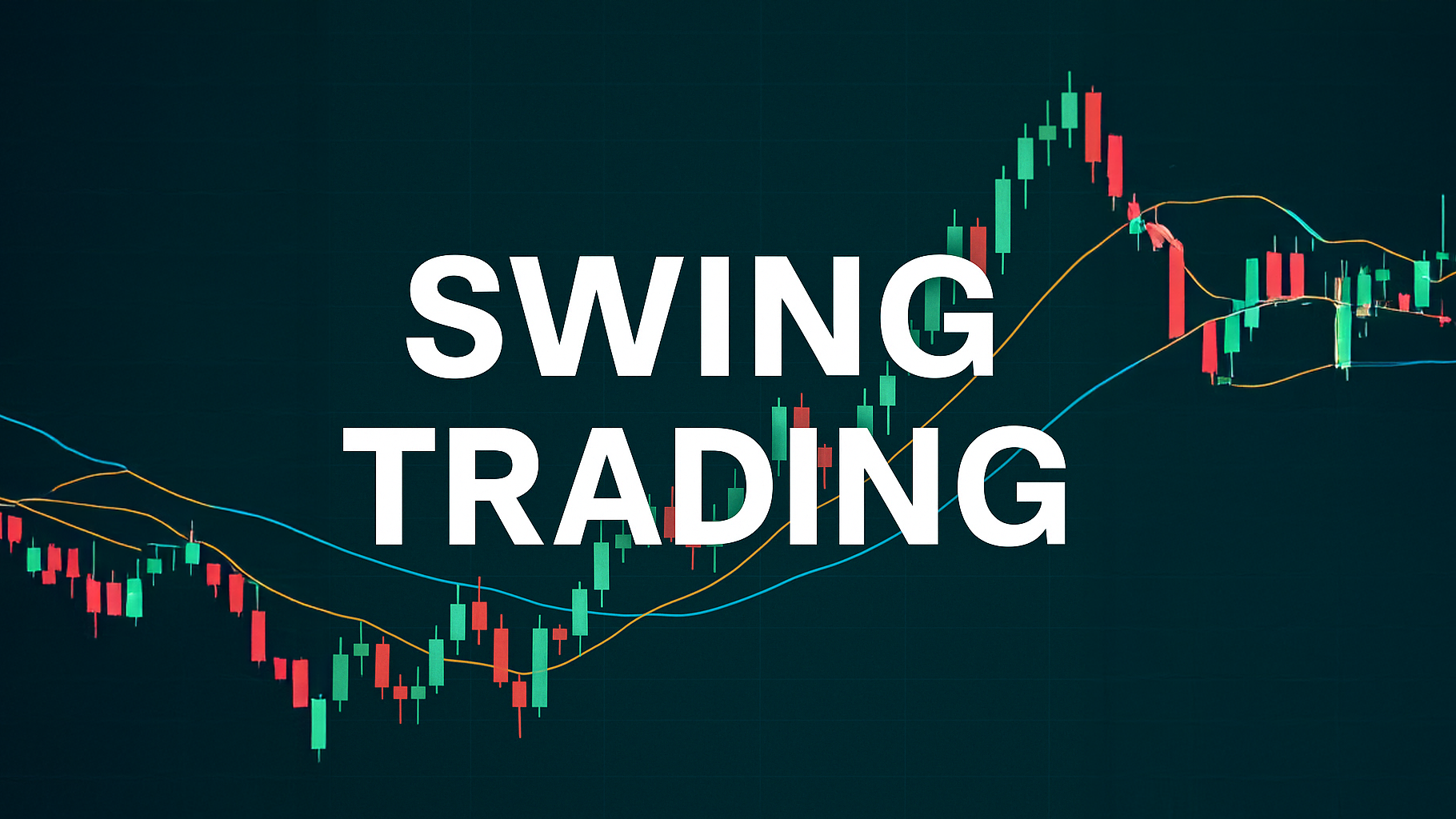Learn effective exit strategies for trading to maximize profits and minimize losses, focusing on discipline and market signals.
Exiting a trade is just as important as entering one. The "sell to close" order is a vital approach for liquidating long positions, locking in profits, or minimizing losses. Here's what you need to know:
Key Points:
- Sell to Close Basics: Used to exit trades in stocks, options, and futures. Example: Selling a call option bought at $7.50 when it rises to $10 locks in a $2.50 profit.
- Types of Sell Orders:
- Market Order: Quick exit at the current price.
- Limit Order: Ensures a specific profit target.
- Stop Loss: Automatically exits to limit losses.
- Trailing Stop: Adjusts with price movement to secure gains.
- Exit Strategies:
- Profit Targets: Set clear goals, like 3:1 reward‑to‑risk ratios.
- Stop Loss Placement: Use technical levels or indicators like ATR to avoid emotional decisions.
- Partial Exits: Sell portions of your position at different stages.
- Trading Psychology: Stick to your plan, avoid emotional exits, and keep a trade journal to improve over time.
- Tools for Better Exits: Platforms like TradingView and the LuxAlgo indicators library help test and automate exit strategies.
Quick Comparison of Sell Orders:
| Order Type | Purpose | Best Used When |
|---|---|---|
| Market Order | Immediate execution | Speed matters, price is secondary |
| Limit Order | Set a minimum exit price | Profit target is critical |
| Stop Loss | Automatic exit at a set price | Managing downside risk |
| Trailing Stop | Adjusts with price movement | Locking in gains during trends |
Having a clear exit plan, combining technical analysis with discipline, and using the right tools can make all the difference in trading success.
How to EXIT Trades for MORE Profit: 3 Best Exit Strategies
Building Strong Exit Plans
A solid exit plan is just as important as picking the right trades. It gives structure to your trading strategy by setting clear rules for profit targets, stop losses, and how to interpret market signals. This helps you make objective decisions about when to close positions.
Setting Profit Targets
Profit targets help you balance ambition with market realities while reducing emotional decision‑making.
"A profit target is a predetermined price point at which an investor will exit a trade for a positive gain." – Investopedia
Cory Mitchell, a professional trader, demonstrates this approach by only taking swing trades with a reward‑to‑risk ratio of at least 3:1. For example, he risks 5% of his capital to potentially gain 15% per trade. When setting your targets, focus on key technical levels like these:
| Target Type | Description | Best Used When |
|---|---|---|
| Fibonacci Levels | Golden Zone (50–61.8% retracement) | Price shows signs of trend reversal |
| Resistance Points | Previous price peaks or congestion areas | Market has clear technical barriers |
| Risk‑Reward Ratios | Minimum 2:1, ideally 3:1 | You follow a systematic trading plan |
While profit targets aim to lock in your gains, stop losses are there to protect your capital.
Stop Loss Placement
Stop losses should be based on technical levels, not random percentages, to help you avoid emotional trading mistakes.
"Following a consistent stop loss approach is very important because it takes out the emotional and impulsive aspect of taking losses that so many traders struggle with." – Tradeciety.com
Using the Average True Range (ATR) can help you set dynamic stops that adapt to market conditions. For example, day traders often set stops at about 10% of the ATR, while swing traders might use 50–100% of the ATR. Once your stop losses are in place, keep an eye on market signals to decide when to exit.
Reading Market Signals
Technical indicators and price action can help you spot the best time to exit. For instance, when the Relative Strength Index (RSI) rises above 70 and price touches the upper Bollinger Band, it could signal an overbought condition. Tesla showed this pattern in September 2020 before experiencing a sharp decline. Similarly, if the price closes more than one point below the ATR’s latest closing value, it might be time to exit.
Exit Methods That Work
When it comes to disciplined exits, these strategies provide actionable ways to protect your gains and manage risk effectively.
Trailing Stop Methods
Trailing stops adjust as prices move in your favor, helping you lock in profits while staying in the trade for potential further gains. The trick is to set the stop based on market conditions and your trading approach.
Here are some common trailing stop methods:
- Use a 10–15% trailing stop below recent highs for stocks in a strong trend.
- Apply a 2–3 × ATR multiplier in more volatile markets.
- Place stops near previous swing points if you're using technical analysis.
For example, say you buy Tesla (TSLA) at $235 and set a 10% trailing stop at $211.50. If the stock climbs to $300, the stop adjusts to $270. When the stock reaches $350, the stop moves up to $315, eventually locking in about $80 per share in profit when triggered.
Another approach to consider alongside trailing stops is partial exits.
Partial Position Exits
Selling portions of your position at different stages can balance locking in profits while still allowing room for bigger gains. A typical approach might look like this:
- Sell one‑third of your position at the first price target.
- Move your stop loss to breakeven.
- Sell another third at a secondary target.
- Let the remaining portion ride with a trailing stop.
Platforms like ATAS make this process easier by allowing you to set multiple take‑profit levels in advance, reducing the emotional stress of decision‑making.
Technical Exit Signals
Technical indicators can also guide your exits. Tools like moving averages, RSI, Bollinger Bands, and MACD can confirm when it’s time to sell. When several indicators align, they provide stronger confirmation, helping you avoid premature exits.
Trading Psychology in Exits
Exiting trades isn’t just about charts and numbers—it’s also about maintaining mental discipline. In fact, managing the emotional side of trading can often be tougher than the technical analysis itself.
Managing Trading Emotions
Emotions like fear and greed can wreak havoc on your trading strategy. Fear might push you to exit too early, while greed could tempt you to hold on for too long. Successful traders rely on simple yet effective methods to stay grounded:
- Deep breathing helps you stay calm during stressful market swings.
- Stick to your plan by focusing on technical signals and honoring stop losses, no matter how tempting it is to deviate.
Following Exit Rules
A solid, pre‑planned exit strategy acts as your safety net during volatile markets. It helps you avoid emotional, spur‑of‑the‑moment decisions.
| Component | Purpose | Execution |
|---|---|---|
| Profit Targets | Lock in profits | Define levels based on analysis |
| Stop Losses | Limit potential losses | Use automatic orders |
| Position Scaling | Manage risk and reward | Exit in smaller portions |
Combining these strategies with mental discipline is just as important as having the right technical tools. However, even the best plans can fall apart if psychological challenges aren’t addressed.
Common Exit Errors
Being aware of common mistakes can help you stick to your plan and avoid emotional missteps:
- FOMO‑Based Exits: Staying in trades longer than planned because of fear of missing out.
- Revenge Trading: Making impulsive trades after a loss, often ignoring your exit strategy.
- Sunk Cost Fallacy: Holding onto losing trades just because you’ve already invested time or money.
Here’s a tough reality: only about 10% of traders succeed long‑term, and emotional missteps are a big reason why. The difference between those who thrive and those who don’t often comes down to emotional discipline.
To improve, keep a trading journal. Document not just your trades but also your emotions during each one. This practice can help you spot patterns where your emotions override your strategy, allowing you to refine your approach and strengthen your exit game.
Tools for Better Exits
Modern trading software has transformed the way traders handle exits. These platforms help improve timing and overall performance. Choosing the right ones is key to executing exit strategies effectively.
Testing Exit Strategies
Using historical data to backtest exit strategies is a smart way to evaluate their performance. Focus on metrics like profit factor and maximum drawdown to gauge effectiveness. Here are some platforms that support detailed backtesting:
| Platform | Key Features | Monthly Cost |
|---|---|---|
| TradingView | Advanced charting, custom alerts | $12.95 – $49.95 |
| Trade Ideas | AI‑powered scanning, backtesting | $89 – $178 |
| MetaStock R/T | Real‑time testing, custom exits | $100 + data feeds |
LuxAlgo Exclusive Exit Features
For real‑time optimization, LuxAlgo provides exclusive indicators and an AI Backtesting platform designed to refine exit strategies. The Ultimate Plan ($59.99 per month) includes the AI Backtesting Assistant, which helps fine‑tune parameters across various timeframes.
Highlighted features:
- Price Action Concepts toolkit for spotting technical exit signals
- Oscillator Matrix for real‑time divergence detection
- Custom Alert Creator for automated exit notifications
- A powerful optimization engine for adjusting signal settings
Trade Journal Analysis
Analyzing past trades through digital journals can improve exit strategies over time. As trader Bill G explains:
"Tradervue enables insights that have revealed many unseen opportunities for my trading improvement."
To make the most of trade journaling:
- Record exit conditions and results
- Note emotional factors that influenced decisions
- Analyze performance metrics
- Adjust your exit strategies based on findings
Platforms like eSignal (priced between $64 and $440 per month) combine advanced charting tools with journaling features. This allows traders to link technical signals with their exit timing for better decision‑making.
Exit Strategy Summary
This summary highlights the key aspects of a strong exit strategy discussed earlier. Successful trading hinges on having a clear plan for exits, combining technical analysis with emotional discipline. With only about 10% of traders succeeding in the long run, mastering exit strategies is crucial.
A well‑structured exit strategy includes three main components:
| Component | Key Elements | Implementation |
|---|---|---|
| Risk Management | Stop‑loss levels, position sizing | Define loss limits before entering trades |
| Profit Targets | Risk‑reward ratios, technical levels | Aim for 2:1 or 3:1 profit‑to‑loss ratios |
| Market Conditions | Technical violations, time stops | Exit when market dynamics shift significantly |
This approach ensures consistent and disciplined decision‑making. As Nial Fuller puts it:
"The more you try to make money, the more you will lose. Trading success is the result of focusing on trading performance; being consistent and doing all the little things right day in and day out so that there are no huge swings in your equity curve."
To refine your exit strategy, consider these practices:
- Set clear exit points: Calculate reward‑to‑risk levels before entering trades.
- Use technical triggers: Let technical violations, not arbitrary levels, guide stop‑loss decisions.
- Automate exits: Reduce emotional bias by using automated exit protocols.
- Incorporate time stops: Combine time‑based exits with price‑based ones to manage opportunity costs.
"Having an exit strategy is essential in managing your portfolio because it can help you take your profits and stop your losses." – Fidelity Investments
Successful traders prioritize disciplined, rule‑based exits. Instead of chasing reversals, they aim to ride consistent trend movements. Keep a detailed trade journal to track and evaluate your exit performance, which will help you refine your strategies over time.






